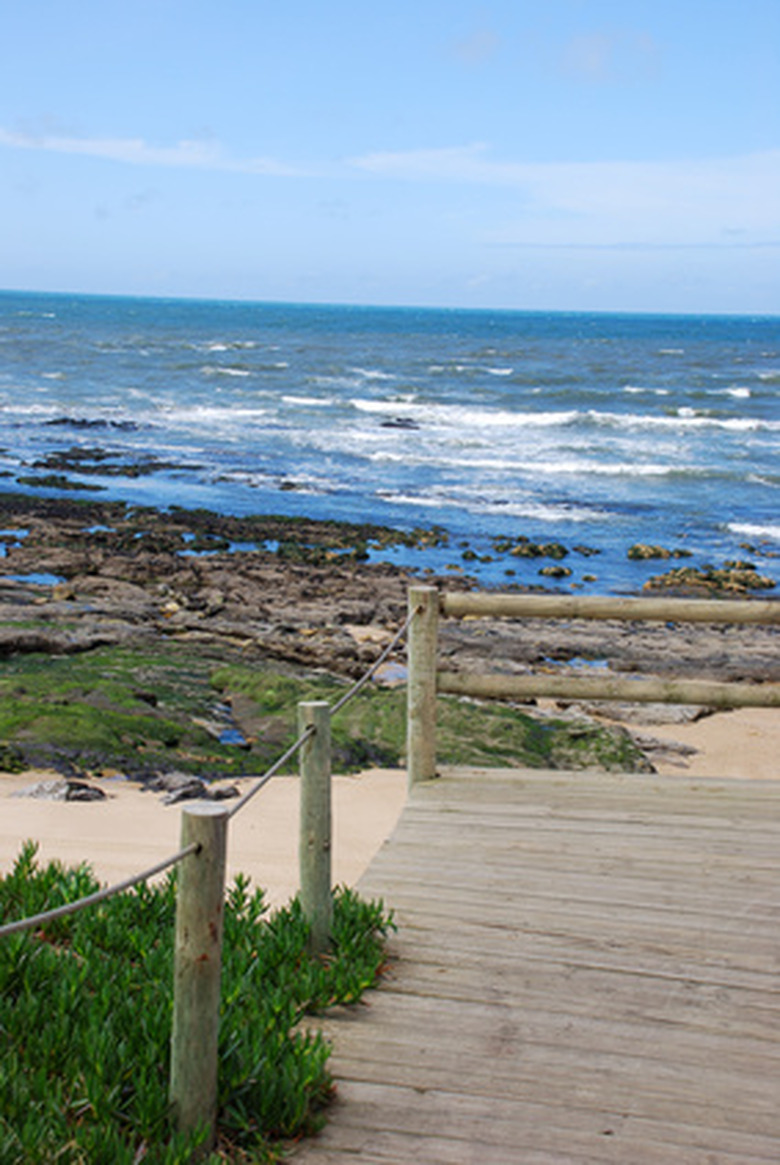Plant & Animal Life On The Continental Shelf
The continental shelf is the part of the continent that lies underwater directly off the shore. The shelf ends when it drops below 650 feet from the surface into the deep ocean. The floor of the shelf is a soft layer of sediment accumulated through river-wash and upwelling from deeper parts of the ocean. This nutrient-rich sediment is kept in balance through abundant sunlight and wave action. It is home to a plethora of thriving plant and animal life that are crucial to sustaining life for many species, including ourselves.
Geographical Areas
Geographical Areas
At one time these shelves were above the water, but have since been covered by the ocean to various depths and widths. In Chile for instance, the land dives straight down into deep ocean with no shelf at all. In contrast, the Siberian Shelf in the Arctic Ocean is about 930 miles long. The shelf off the west coast of the United States is considered narrow, only about 20 miles wide, while the eastern edge is around 120. The world average is 40 miles wide.
The variety of plant and animal life on the continental shelf will depend on location and size factors.
Plankton on the Continental Shelf
Plankton on the Continental Shelf
The basic food chain on the continental shelf starts with microscopic plants called phytoplankton which feed off of sediment nutrients, according to online resource MarineBio. Phytoplankton is the main food source for some bottom-dwelling feeders and zooplankton (microscopic animals). Zooplankton is a main food supplement for all other animal sea life.
Algae thrive on the rockier areas of the shelves where it attaches securely, blooming in the sun.
Plants on the Continental Shelf
Plants on the Continental Shelf
Copious amounts of kelp and other seaweed exist on the shelf either floating or anchored in the deeper areas, about 100 feet down. Sea snails, kelp crab, abalone and sea urchins are some of the animals that feed on kelp. Sea urchins in particular are voracious kelp eaters and would quickly decimate the kelp forests if it were not for sea otters, according to Science Encyclopedia. The otters live amongst the kelp and dine on sea urchins, abalone and other kelp dwelling invertebrates.
Animals on the Continental Shelf
Animals on the Continental Shelf
In addition to the animals already mentioned, there are many others that make their homes in the shallow water of the shelf. Lobster, Dungeness crab, tuna, cod, halibut, sole and mackerel can be found. Permanent rock fixtures are home to anemones, sponges, clams, oysters, scallops, mussels and coral. Larger animals such as whales and sea turtles can be seen in continental shelf areas as they follow migration routes.
Continental Shelf Ecosystem
Continental Shelf Ecosystem
The delicate ecosystem of the continental shelf is constantly studied and monitored by thousands of marine biologists around the world. Effects of pollution and overfishing are devastating to the point of near extinction for some animals and loss of wetlands, according to Proceedings of the National Academy of Sciences (PNAS). Fortunately, measures are being taken to correct damages and restore the shelf to a more stable environment.
Cite This Article
MLA
O'Connor, Krista. "Plant & Animal Life On The Continental Shelf" sciencing.com, https://www.sciencing.com/plant-animal-life-continental-shelf-6816368/. 22 November 2019.
APA
O'Connor, Krista. (2019, November 22). Plant & Animal Life On The Continental Shelf. sciencing.com. Retrieved from https://www.sciencing.com/plant-animal-life-continental-shelf-6816368/
Chicago
O'Connor, Krista. Plant & Animal Life On The Continental Shelf last modified March 24, 2022. https://www.sciencing.com/plant-animal-life-continental-shelf-6816368/
